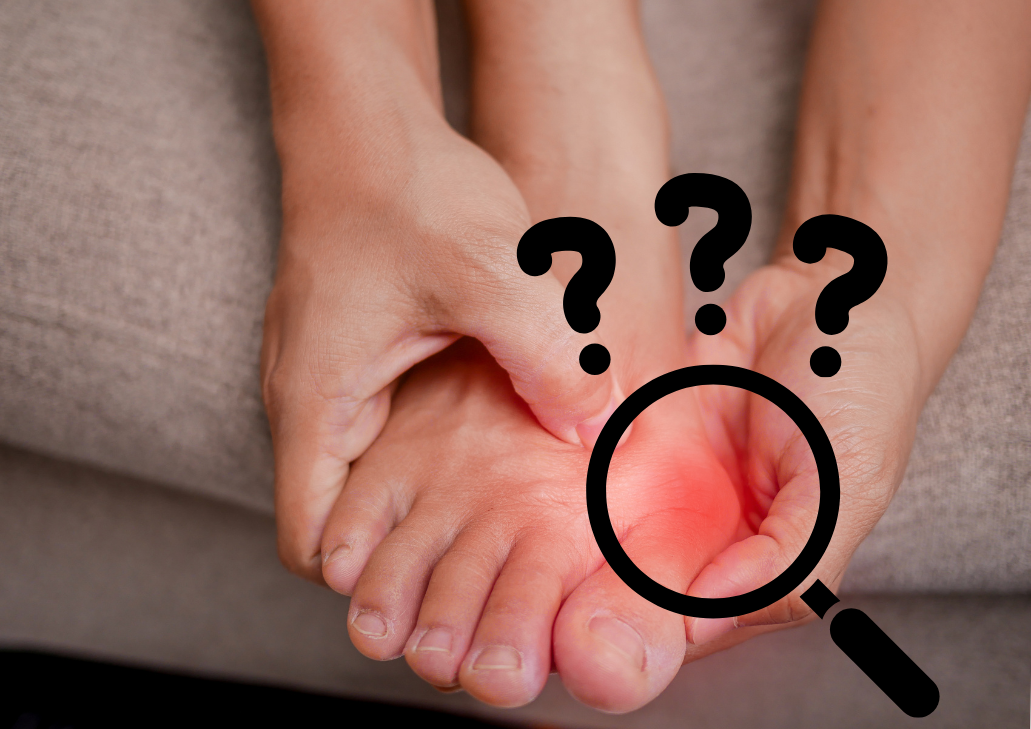
The hidden cause of bunions: what you need to know to protect your feet
Bunions are more than just an annoying bump on the side of your foot. For many, they mean years of pain, discomfort, and a gradual loss of mobility.
If you’ve noticed your big toe starting to lean towards the others, forming that familiar bump, it’s important to understand what’s really happening and how you can take action effectively.
What is a bunion?
A bunion forms when the bones in the front of the foot shift out of alignment. This misalignment pulls the tip of the big toe towards the smaller toes, forcing the base joint of the big toe to protrude outward.

Over time, this joint becomes swollen, painful, and increasingly noticeable.
Bunions can be caused by several factors, including genetics, foot injuries, and wearing shoes that are too tight or narrow. However, one often-overlooked cause is poor foot alignment.
The hidden cause: foot misalignment
Foot misalignment is a common issue that many people don’t even realise they have.
When it comes to bunions, overpronation (the inward rolling of the back of the foot) has been directly linked to their development due to the increased pressure it places on the toes.
This excess pressure forces the big toe to turn inward, making it much easier for a bunion to form.
Think of your feet as the foundation of a house.
If the foundation is uneven or unstable, the entire structure is at risk.
Similarly, when your foot’s natural alignment is off, it sets off a chain reaction of problems that can affect your knees, hips, and lower back—and lead to bunions.
3 tips to get rid of bunions
If you're struggling with bunions, here are three practical tips that can help reduce pain and potentially eliminate the bunion over time:
Wear properly fitting shoes:
One of the most important steps is wearing shoes that fit correctly. Avoid narrow, tight, or high-heeled shoes that squeeze your toes together and worsen bunions.
Instead, choose shoes with a wide toe box that allows your toes to spread naturally. This reduces pressure on the big toe joint and can help prevent your bunion from getting worse.
Strengthen your foot muscles:
Weak foot muscles can contribute to misalignment and bunion formation. Regular exercises that strengthen the muscles in your feet and toes can help maintain proper alignment.
Simple exercises like toe stretches, picking up small objects with your toes, and rolling your foot over a ball can all be beneficial. These movements increase flexibility and strength around the big toe joint, helping to reduce pressure on the joint and prevent further bunion progression.
Correct overpronation = get rid of bunions
Overpronation, where the foot rolls too far inward while walking, is a major cause of bunion formation. Correcting this misalignment with ComfySole insoles can make a significant difference.
ComfySole insoles are designed to support the foot’s natural arch, ensuring even weight distribution and reducing stress on the big toe joint. By addressing overpronation, ComfySole helps relieve the root cause of bunions, providing long-term relief and promoting healthy foot alignment.
A modern solution: correcting foot alignment naturally
Correcting foot alignment is key to preventing bunions and reducing the pain and discomfort they cause.
ComfySole insoles offer an effective solution, designed to support the foot’s natural arch, address issues caused by overpronation, and relieve the pressure that leads to bunion formation.
With ComfySole insoles, you can take active steps to protect your feet.
Don’t wait until your bunion becomes too painful to ignore. By correcting misalignment early, you can prevent further damage and keep your feet healthy and pain-free.
ComfySole provides a simple, non-invasive way to realign your feet and protect against bunion-related discomfort.

